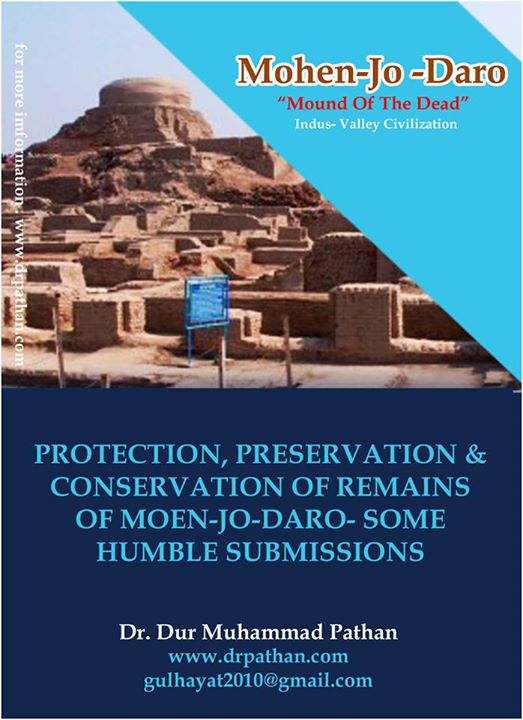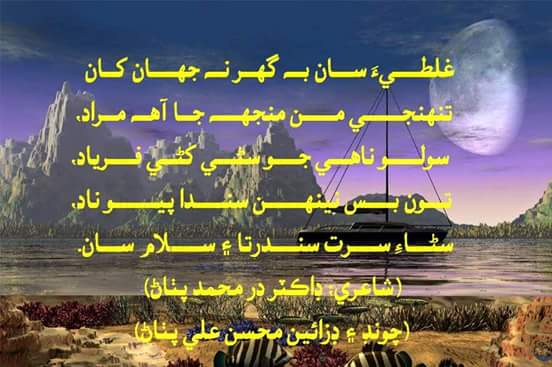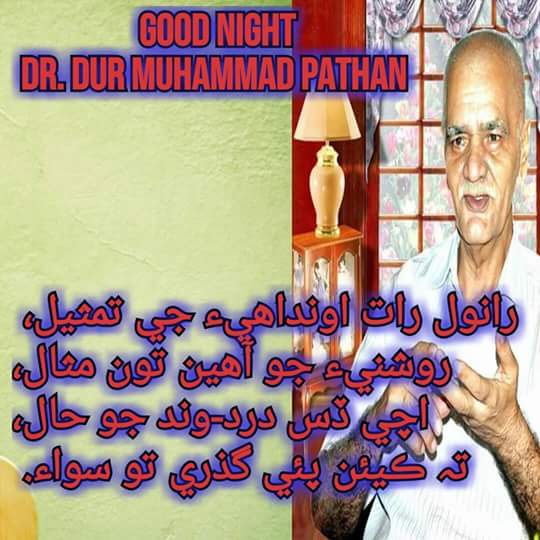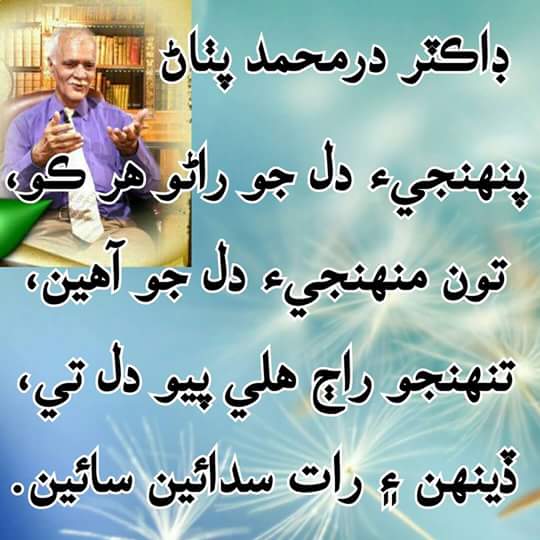PROTECTION, PRESERVATION & CONSERVATION OF REMAINS OF MOEN-JO-DARO- SOME HUMBLE SUBMISSIONS

It was in August 1848, when Commissioner in Sindh, in compliance to Government of Bombay’s directive No.2803, dated 31st July 1848, asked collectors in Sindh, to furnish information relative to caves, monuments and archaeological sites in thin their districts.(1) It was the first time in the history of Sindh that Government took initiate for taking care of cultural property. Now it is in 2011, that Sindh Government and its Culture Department has started playing its install role for the protection, preservation & conservation of our glorious past that is available with us in the shape of Archaeological sites.
Though, still as the mystery, but a lot of material has been produced by scholars and archaeologists on the origin, cultures, down fall, preservation & conservation of Mohen-Jo-Daro. (2) origion and and end of Mohen-Jo-Daro, is still fabricated on hypothesizes. Its culture is being interpreted by conducting research basis of archaeological evidences, and preservation of its structural remains has been and is being recommended on solid technical grounds.
No doubt, it is remarkable work, but still more authentic and commendable work is needed. Now the Culture Department is looking after the ignored Cultural property, and we hope for the better results. The Department, under the dynamic leadership of the minister and hard work of capable able Secretary, has started materializing its responsibilities and Conducting/ Organising of this Seminar is a clear example of the seriousness, sincerity and devotion of the Department and its officials.
I am neither authority on the Archaeology nor a technical hand; I am a lay man, but with love and affection for my glorious Past and its archaeological and historical evidences. Moen-Jo-Daro is situated at the distance of a few mile from my village, therefore it is but natural to have attachment with the site.
After the Separation of Sindh from Bombay Presidency, Sindh Historical Society, wrote and requested the Director- General of Archaeology, that objects and Items are being shifted and that process may kindly be stopped and shifted material be handed over to Sindh Government.(3)The Director General replied. “The dacoity prevailing in the neighbourhood of Mohen-jo-Daro has prevented the exhibition there of objects of intrinsic value.”(4)
It is amazing to note that yesterday, there was problem of preservation of objects of the site, and today we are thinking about the preservation and conservation of structural remains. Now, it is a great and noble task for the Culture Department and I hope, the task will be completed as per requirements of the site and aspiration of the people.
I have gone through some technical reports, and most of them are worth to be implemented(5). They are concerned with only one dimension of the problem, i.e structural remains. Where as, in my opinion, the problem is multi-dimensional. It ranges from under earth condition to above walls. It is related with reasons of collapse of the civilization, it is connected with the administrative setup, law & order situation, psychology of masses and society, and it is connected with technical treatment and requirements of the site.
Structural remains at the site are deteriorating at unacceptable high rate. The main reason for the situation, Identified by experts is the crystallization and hydration of mineral then ardite (Sodium Sulphate). It has been said that drainage and runoff water, ground water and condensation of moisture, heavy rains and unbearable heat are high-risks for structure remains at Moen-Jo-Daro.
For minimizing almost all kids high-risk and threats, all dimension of the problem are to be kept in mind. The problem requires dealing and treatment technically and non-technically in this connection, my submissions are as under:
1. Administrative Grip:
No doubt, with handover of archaeological has revised administrative strategy, and it has started bringing better results. We have to accept the fact that in past, due to absentee stake-holder ship in administration, the site and structural remains have suffered a lot. Now, the code of conduct for visitors is to be prepared and implemented accordingly. Surface collection of material and objects is to be people of nearer villagers is to be discouraged. Community participation in the shape of “local Advisory Committee is to be ensured accordingly.
2. Blocking the Way of Water:
Technical experts have declared drainage, runoff water and ground water as high-risk for the Structural remains. If Aswan Dam can be redesigned to save the civilization, than why we cannot chain our Indus. Its course can be diverted. Everything is possible and nothing is beyond the vision, wisdom and sincere effort of devoted and dedicated Department or Government. If we cannot put Indus at arm’s distance, we can discourage its habit of supporting the rise of the underground water level. It is possible to build “protative boundary wall” right from under earth up to chest level. If chinees can built a well to protect themselves from invaders, we can also end the invasion of unserground water or inundation by Indus. The Government by baning the cultivation of Rice croop within limits, as to be recommended by experts and technicians can also minimize the underground water level to some extent.
3. Minimizing threat from visitors:
Very serious threat, that is being faced by structural remains at site, is under attitude of visitors. Walking on walls, jumping into wells, photography on sensitive spots and surface collection of valuable objects has become the culture of visitors. To curb tendency, administrative steps with Iron hand are to be very nmuch required. It is essential to raise the entry fee and watch activities of visitors through c.c.tv. system.
4. Cages & Conservatories for sensitive spots:
To save the very sensitive and important sports from visitors, cages and conservatories can be installed accordingly. Because it will save a lot. If animals in zoo can be protected by same method, why we cannot introduce I on the site.
5. Fiber glass cover to protect structure from heat & rain:
For protecting our evidences of glorious past form rain and heat, we can provide Fiber Glass ceiling to the portion/spot of site, unable to bear heat and rain more.
6. Making the task continuous & permanent:
Preservation, conservation and protectin of Moen-Jo-Daro, or any site of archaeological importance is not a one a “one time task.” It is a continuous prosess.
There was my passing reference, in the beginning. Talking about the dimensions of the problem with the past. Though it seems to be vauge, but it bears some weight. I am diverting and inviting attention of scholar and archeologists to a new aspect of the problem and subject. We can refer to past for our present problems and situation also.
On the rise and fall of Moen-Jo-Daro and Indus civilizations, at least five theories, let me say hypothesis have taken birth. They are:
a. Twisting and turning of Sindhu. (6)
b. Drought caused by damaging and making the Indus empty.(7)
c. Climate change. (8)
d. It was transformation. (9)
e. It was finished by atomic war fare. (10)
The reason what so ever be, but these hypothesis/theories have Identified Sindhu and climate responsible for the cause of fall of wonderful civilization.
Keeping these studies, theories and hypothesis in mind, I have linked one dimension of the problem of conservation and preservation of structural remains of Moen-Jo-Daro with the past. It is an agenda for archaeologists, anthropologists and social scientists to look into the matter and find if these are common factors of high-ricks and threats in past and present in this connection , I will also request and recommend the culture Department for establishing of the Reference library of international standard at site, having collection of source material, information, data on the site, Archaeology, comparative studies of vanished civilization etc.
I must not take more time, because I am here to listen and learn more from scholars, experts and archaeologists.
So, thank you all.
REFERENCES & NOTES:
See files No 215 , General 1848, commissioner’s old records, with special reference to letter No. 2803, dated 31st July 1848, from Govt. of Bombay to Commissioner in Sindh & circular letter No.2199 sated 12th August 1848, from commissioner- in Sindh to collectors of districts.
It is interesting to note that Sindhi Scholars have contributed a lot towards adding source material on Archaeological sites of Sindh. A few titles of their papers are given as under. Their writings are to that extent that a Bibliography on the source-material can be complied:
A. “Identifications of some old places in Ancient Sindh” (Journal of Sindh Historical Society,
Karachi, Vol-Part III, March 1935).
B. “Excavations of pre-Historical places in Sindh”,(J.S.H.S, Vol II, Part I, June 1936)
C. “Extracts relating to Sindh from Annual Bibliography of Indian Archaeology from 1926-1936’ (J.S.H.S, Vol II, Part I, August 1937 & Vol III, Part IV December 1938)
D. Index to Annual Archaeological reports for 1920 to 1929;” (J.S.H.S, Vol V, Part IV, Feb: 1942)
Photostat copy of the letter is attached here with as Appendix No-1
Photostat copy of the letter is attaché here with as Appendix No-2.
The Technical report by James R.clifton on “ preservation of structural remains” at Moen-Jo-Daro prepare in 1980 is one of these technical reports. It deals with the problem of reduction of the rate of brick deterioration. 13 + 3 pages report is a good task done by the author.
Earnest mackay who worked with Sir John Marshall believed that flooding of Indus river caused the destruction.
Another theory that has been proposed about abandonment of Moen-Jo-Daro is that Indus was impounded by formation of natural dam near sehwam which caused so much trouble dam for people of Moen-Jo-Daro that they abandoned it . this theory was proposed by Raikes and Dales.
Climate change theory was proposed by Prof. Gurdip Singh in 1971.
Possehl, Bridget and Raymond believe that it was transformation.
Philip Coppens is of opinion that it was Atom, Necular Warfare that had ended the wonderful Indus civilization.
Appendix No-1
Sindh Historical Society,
Karachi
Dated: 22.5.1945
To,
The Director-general of Archeology in India,
New Delhi.
Sir,
The members of the Council of Management of the Sind Historical Society view with conern the intention of the Archaeological Department to remove the valuable relics from the Museum at Mohen-Jo-Daro to Lahore. I have been asked by the Council to place before you their view on the matter and hope that the they will receive at your hands the consideration they merit.
The main reason for shifting the relics seems to be that since Mohan-Jo-Daro is an out of the way place, the relics are practically out of the reach of the average scholar. As such they need to be shifted to centrally situated station where accessibility to them is guaranteed to the research worker and the archaeologist. And Lahore appears to the Archaelogical Department as the mos suitable place for the purpose under the existing circumstance. The Council of Management fell that in this respect the claims of cities in Sind have been over looked while deciding the issue.
The Council is definitely of the opinion that Karachi is more suited for the puepose. Karachi is quite accessible and offers at least as much faciliyty to the scholar as Lahore does, if not more.
Karachi has a local Museum where the relics could be housed. That the relics would be safe and would be well looked after is certain since Victoria Museum at Karachi is in charge of an archaeologist Mr. Roy, who has himself worked at Mohan-Jo-Daro. The council of Management are glad to inform you that the Victoria Museum Authorities had plans ready for the construction of a separate Mohen-Jo-Daro wing, but as the war broke out the plans could not be executed, but now that the hostilities have ended in Europe , the authorities are seriously contemplating he construction of the afore-said wing at the earliest possible moment. Karachi thus offers the best accommodation and care for the relics.
At the same time Karachi enjoys an equable climate which will make it possible for the scholar to study there all the year round, where as in Lahore it will be extremely difficult for them to work during the hot weather.
The Council of Management are of the definite opinion that Sind has a better and a prior claim to house the relics of a civilization that is its glorious heritage. In addition, if the Mohen-Jo-Daro relics are removed outside Sind, the scholar will finds from the various chalcolithic sites in Sind, many of which have been but partially excavated by the late Mr. N.G.Majumdar and are likely to receive more attention at the hands of the archaeological Department in the near future as the hold out much promise.
Bearing all these facts in mind, the Council of Management feel that in case the Archaeolgical Department do want to remove the important relics from Mohan-Jo-Daro, the Karachi Museum should demand their attention first, particularly now, as it has never received the attention it rightly deserves. The Council further venture to suggest that are presentative collection of Harappa culture finds may also be sent to Karachi to make comparative study possible.
It, however, occurs to the Council that the claims of the Karachi Museum may be waived on account of its management being in the hands of the local Municipal Corporation. This objection, the council feel can be set at rest by the appointment of a local select superintending committee of official and non-offficial experts to safeguard the interests.
The Council of Management of the Sind Historical Society are sanguine that if the matter of removal of relics from Mohan-Jo-Daro is considered in light of the above facts as also the starting of the Sind University which contemplates the starting of the Department for the study of Sind Culture at the very commencement of its career, your Department would agree to the suggestions made by them.
Your faithfully
sd/ N.M.Billimoria.
Vice President, Sind Historical Society.
Appendix No-2
From: Dr. R.E. Mortimer wheeler,
Director General of Archaeology in India.
Simla, the 24th July , 1945.
Dear Sir,
With regard to the subject of your letter of the 22nd May, 1945, namely, the removal of relice from the MohenJoDaro Museum a communication has been sent to the Government of Sind. I am therefore now able reply to your letter written on behalf of the Sind Historical Society.
The press reports and rumours relating to this matter were much exaggerated, and the correct facts are as follows:-
1. For some years the dacoity prevailing in the neighborhood of Mohenjodaro has prevented the exhibition there of objects of intrinsic value. These objects have therefore been stored in a bank safe some miles away.
2. Very few visitors, particularly at the present time, are able to visit Mohenjodaro, although it is clear from enquiries received that interest in the site and relics is maintained.
3. It is to be hoped that in due course an adequately financed and maintained museum may come into being at Karachi. The present museum , however, cannot be so described. I made a special point of visiting the Victoria Museum at Karachi in 1944 and found it in an extremely unsatisfactory condition. the object were arranged unsystematically, there was a great deal of dirt in the cases, and there was a complete absence of systematic labeling. It is obviously not for me to diagnose the causes underlying this state of affairs, but I was compelled to make it clear to the Curator that, unless the situation should materially improve before my next visit, I should be compelled to withdraw the loan collection of Mohejodaro relics now deposit there.
4. On the other hand, at Lahore there is an adequately (though not lavishly) financed provincial Museum which was prepared to give adequate space for an “Indus Culture” exhibition. Lahore itself lies approximately in the centre of the ancient Indus Valley area, and it is on one of the great modern traffic routes of India. The conditions are thus particularly suitable for the purpose in question.
5. At the same time I would make the following point clear to you:-
(a) The objects from Mohenjodaro now at Lahore are placed there only on loan and without prejudice to their future disposal.
(b) A considerable collection of objects will be retained at Mohenjodro itself so that the visitor may be in a position to appreciate the general characters of the Mohenjodaro culture.
(c) If and when a suitably maintained museum is established at Karachi with some sort of permanent guarantee behind it, my Department will be very glad indeed to cooperate fully with it in making it worthily representative of the province which it will serve.
Yours faithfully,
Director General.
The Vice President,
Sind Historical Society,
Marston Road, Karachi.



